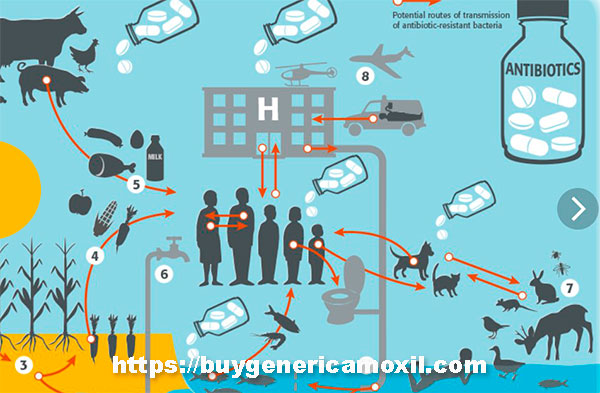We continue the topic of environmental pollution with antibiotics. We have already written about antibiotics in meat and other livestock products. But this is all about the shortcomings of animal breeding technology.
In theory, there should not be antibiotics in products, and if they appear, it means that the application technology has been violated. Or in the variant with honey – treatment was used with a violation of the deadlines, during the period of honey collection.
But the fact that the substance will sooner or later leave the animal and enter the environment is guaranteed. About 65% of the drug leaves the body unchanged.
The first and most alarming consequence is the emergence of mass resistance in many “wild” microorganisms. Including pathogens. Known diseases have only just begun to acquire adaptations for antibiotics, and treatment has become much more complicated.
But what happens when a newly emerging disease immediately becomes resistant to antibiotics?
In 2014, a WHO report in Geneva raised the issue of the global public health threat of antibiotic resistance. In patients in Europe, there has been a decrease in the effectiveness of treatment with standard antibiotics.
By 2050, the death rate from antibiotic resistance is predicted to be higher than that from cancer.
Antibiotics dangerous in the environment
And livestock plays a major role here: According to statistics, 70% of all antibiotics consumed are in animal husbandry, which leads to the development of microbial resistance.

If, after leaving a person, the medicine mainly gets to the treatment facilities, where it is partially (but not always completely) destroyed. Then runoff and other waste from farms enter the environment often untreated. And moreover, they are specially distributed in the environment, for example, in the form of manure or simply running water in the case of fish farms.
Thus “wild” microorganisms become resistant to tetracycline or amoxil even in arctic waters.
But the danger is not just drug resistance.
- Antibiotics disrupt the operation of sewage treatment plants and composting.
- Growth of some crops using manure as fertilizer.
- They affect the growth of producers in natural marine ecosystems and consistently accumulate in fish (yes, not only DDT can do this).
At the same time, the effect of drugs is manifested in very low concentrations, many times lower than the threshold values calculated in the initial studies (1/20 of the minimum inhibitory concentration).